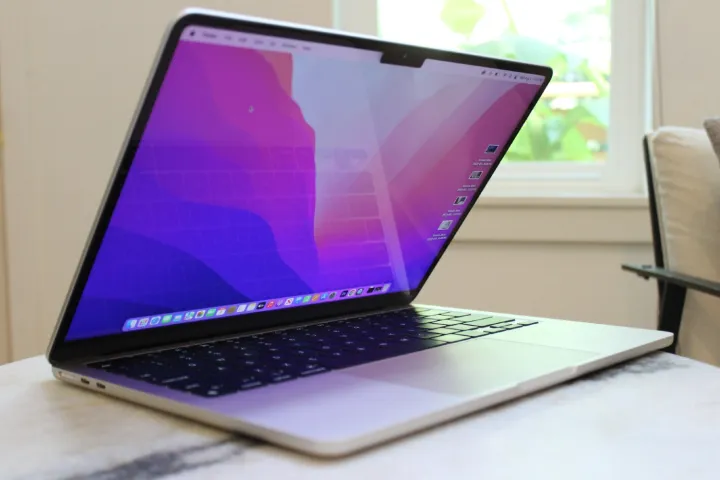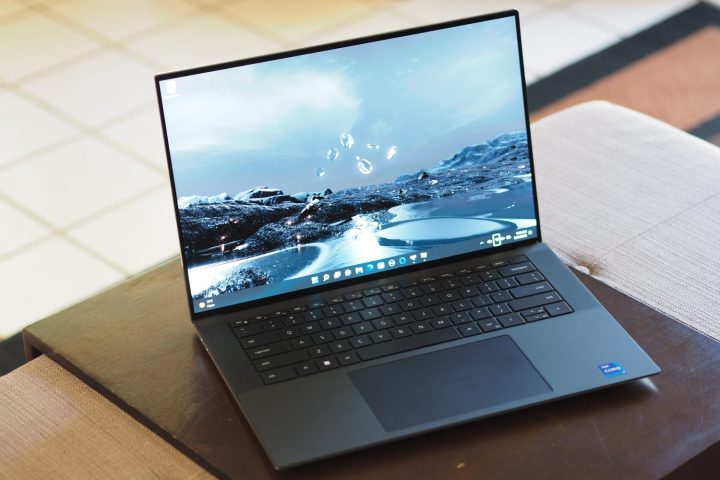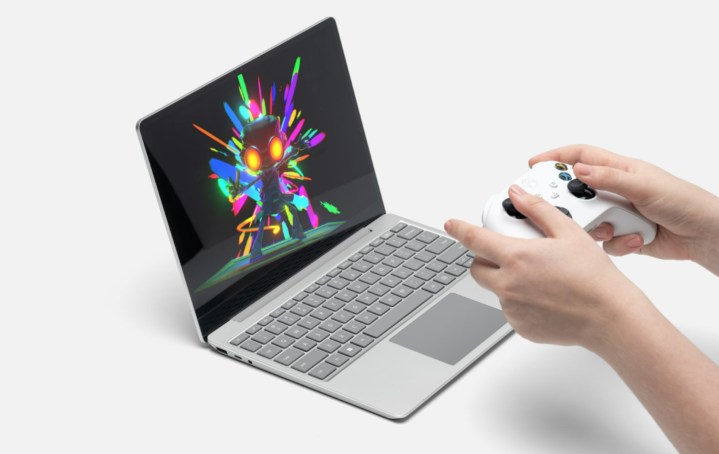The MacBooks versus Windows laptops debate has been raging for decades, but never has it been this intense or important. New advances in chip technology are propelling even entry-level MacBooks to high-performance targets, and a shift away from cheap plastics evens the playing field between these two platforms. Both Windows 11 and MacOS are intuitive and clean operating systems. But where they differ comes down to one key element: their ecosystems.
What this means for you is that you must carefully decide where you’re going to sink your hard-earned money. The laptop you choose now will greatly influence which accessories you buy, which apps you use, and even what kind of phone you carry. Your entire workflow will depend on the platform you go with, from how you manage windows to keyboard shortcuts. It’s not a light decision.

The 2020s have thus far been incredible for computing. This new era has also been incredibly difficult for consumers because ecosystems rule everything. It’s not easy to jump from one to the other once you’ve sunk money and time into your chosen ecosystem. It’s time to choose wisely.
Build quality
There’s no denying that Apple hits physical hardware out of the park. From a purely aesthetic (and subjective) viewpoint, MacBooks are gorgeous. They look great. They feel great. That boxy industrial-minimalist design feels as if it’s worth $2,000 or more. Ever since the debut of the M2 MacBook Air in June 2022, every MacBook has followed the same design.
Don’t forget the actual quality you’ll get with a Mac. Take the hinges as an example. You can open up any Mac with one hand. The screen simply opens up while the base sits as is. Also, the screen stays firmly in whichever position you left it in. There’s no wobble. There’s no dropping. Apple has nailed the hinges, and no Windows OEM comes close.
You’ll also get an amazing keyboard now that Apple has ditched those awful butterfly keys. You’ll appreciate this keyboard if you’re a coder or a writer. There’s nothing else like it available on a laptop. The same goes with the Mac trackpad, which is hands-down the best of any laptop. The haptic feedback, the accuracy, the swipe gestures … no Windows laptop has a trackpad like a MacBook.
But Windows laptops have an ace up their sleeve when it comes to build quality: variety. The top Windows laptops share the same sort of industrial design language as MacBooks, whether that’s the Asus ZenBook, the Dell XPS line, or even Microsoft’s own Surface Laptops. Taken together as a whole, you get a lot more choice in design and color than you do with MacBooks. Some of them even have decent trackpads, such as the Surface Laptop, although it is still not on the same level as a MacBook.
What you won’t get on any Windows laptop is the same attention to the hinges. This isn’t a game changer, but just be prepared to use two hands to open your computer.
MacBooks are generally the superior laptop when it comes to build quality, at least when you consider the entire range of MacBooks and how uniform that quality is.

Internals
You need to consider what kind of computing power you want from your laptop when choosing between MacBooks and Windows laptops. MacBooks use ARM chips, and these are getting more powerful by the day. They’re able to combine graphics and processing into one small chip, which gives you extraordinary battery life. You’ll barely hear the fans spool up.
Windows laptops, on the other hand, mostly use either Intel or AMD processors and Nvidia or AMD graphics cards. This means a greater power draw and lower battery life, and the fans are constantly running. But it also means more versatility, so you can play more games and download more programs thanks to the x86 architecture. Also, some Windows laptops are also switching to ARM chips, so this field isn’t as divergent as it used to be.
Both MacBooks and Windows laptops offer incredible computing power, and there is no real difference in what they’re capable of, although you’ll have greater access to higher-end graphics on Windows machines.
Operating system
The meat on the bones of the MacBooks versus Windows laptops debate is their respective operating systems. MacOS is a gorgeous and mature UNIX-based system. It hasn’t changed much in the past 20 years, aside from some tweaks and visual overhauls.
The entire OS is uniform across programs. This means the menu items, buttons, and overall look and feel of every app are consistent. For example, you’ll always find the File menu in the same place, no matter which program you use.
Windows is a completely different beast. It has undergone several major overhauls in the past years, with Windows 10 and then Windows 11 being the most significant. Windows 11 is a little MacOS-like, with the centered taskbar, rounded corners, and slick, glassy look. Both Windows 10 and Windows 11 look as nice as MacOS, so it’s under the hood where you’ll find the biggest differences.
A lot of past versions of Windows have been left in the system, however. You’ll find subsystem control panels dating back to the Windows XP era. The Windows code itself is a Frankenstein’s monster of years of different versions all mashed together. Each app you use will have its own look and feel. Menu items can be wherever the developer wants to put them. Windows 11 is trying to bring some conformity to the overall system, but it’s still a jungle out there.
Both operating systems are equally good from a visual perspective, but MacOS is clearly superior when it comes to ease of use and its uniform, UNIX environment.

Windows
There are some annoyances with MacOS, beginning with the way windows behave. The top-corner “X” does not close windows, it simply minimizes them. You need to use Command + Q or right-click on the window icon to completely close out of it. Windows users coming over to MacOS will find this extremely frustrating.
Windows management overall is a painful experience on MacOS. You can work in two windows side by side, but you’ll need a third-party toolbar app if you want to do anything else. Also, if you have two windows of the same application running, you can’t use Command + Tab between them. You need to right-click on the icon and carefully click on the window you want.
The same goes for trying to see how many instances of an app you have open. You’ll only see a small black dot below the icon, but you won’t see that you have four Safari windows open, for example.
Window management is phenomenal in Windows 11. There are multiple built-in layouts you can use. You can snap windows to the sides of the screen simply by dragging them, and you can re-center everything by grabbing a window with your mouse and then vigorously shaking it.
Every instance of an app you have running shows up on the taskbar. If you have four Edge browsers open, each window will have its own icon on the taskbar, and you can easily find the one you need. You can press Alt +Tab between them. If you have multiple monitors, you can drag individual windows to the second monitor, and the taskbar icon will also move over so you know which window is open on which monitor.
And the best part of Windows? Clicking Close actually closes the app. Revolutionary, right?
Despite the things MacOS gets right, Windows is clearly the superior OS when it comes to windows management.

Ecosystem
Both Windows laptops and MacBooks come with a healthy ecosystem of first-party apps, such as email, calendars, note-taking, and reminders. Apple’s offerings on MacBooks are still barebones. Notes and Reminders have come a long way in the past five years but still don’t match up to many third-party apps. Apple Mail is dismal, despite Apple’s mediocre updates since MacOS Ventura.
Where MacBooks really shine is in the Apple ecosystem. Using an iPhone, iPad, Apple Watch, AirPods — anything Apple, really — with a MacBook is a joy. You can AirDrop large files from one device to another nearly instantly. Your AirPods connect without you needing to lift a finger. Continuity allows such perks as copying a link on your iPhone and simply pasting it on your MacBook. iMessage on Mac is great, and Apple Keychain means your passwords carry over across all your Apple devices.
The downside to this ecosystem is Apple itself. You’ll be locked into Apple’s narrow view of what an ecosystem should be like. Android won’t work with your Mac. Windows won’t work. And if you depend on Apple’s first-party apps, you will be limited to using only Apple devices. The iCloud.com website is barebones, and you won’t be able to do much else off the platform.
Windows laptops, on the other hand, are much more open, and this is where the entire Windows platform really shines. Thanks to Microsoft’s Your Phone app for Android, you can get a lot of the same functionality on your Windows laptop as you would on a MacBook, such as messages and file transfers (up to a limit). Samsung phones, in particular, work extremely well with Windows.
You’ll also get Microsoft’s excellent first-party apps built right in. Microsoft’s productivity software is light years ahead of Apple. Even the base Windows Mail client is more functional and easier to use than Apple’s horrible Mail app. OneNote is a beast and possibly one of the greatest productivity apps ever created.
Best of all, every Microsoft app is available on every platform. You can get apps for your Apple devices, and the Microsoft web apps are just as powerful.
Finally, there’s one area where a Windows laptop is hands-down superior to anything Apple can offer, and that is gaming. You simply cannot enjoy Mac gaming the same way you can enjoy gaming on a Windows laptop. Sure, there are some big titles available on MacBooks. You can cloud game with Game Pass Ultimate, Stadia, and GeForce Now. But you can’t get all the functionality, smoothness or any offline capabilities.
The Windows ecosystem is superior to Apple’s ecosystem. That sounds counterintuitive because Apple is famous for its ecosystem. However, Apple is too locked down and too dependent on Apple-only devices for the real world. It is a carefully manicured garden rather than a true ecosystem filled with diversity.
Windows, on the other hand, hits the entire concept of an ecosystem out of the park. Although the more-curated experience is better for some, the fact is that you can use more devices and more apps with a Windows laptop than with a MacBook.

How to choose
MacBooks are superior when it comes to build quality and the UNIX-based MacOS operating system. Windows laptops take everything else, including the ecosystem.
The only reason you should choose a MacBook over a Windows laptop is if you want to be comfortable inside that Apple garden. You give up the diversity of accessories and apps, as well as the ability to really game, but you get a polished, good-looking computing experience.
Everyone else should get a Windows laptop. You’ll have so much more freedom to use the machine how you want. You shouldn’t even be considering a MacBook if you’re packing an Android phone. There really isn’t a choice for gamers, either. It’s Windows or bust.
Editors’ Recommendations




